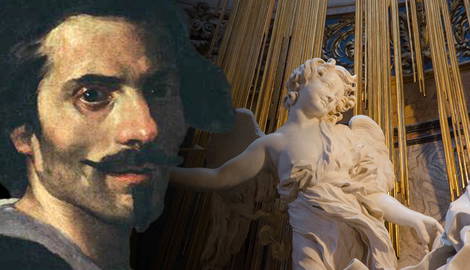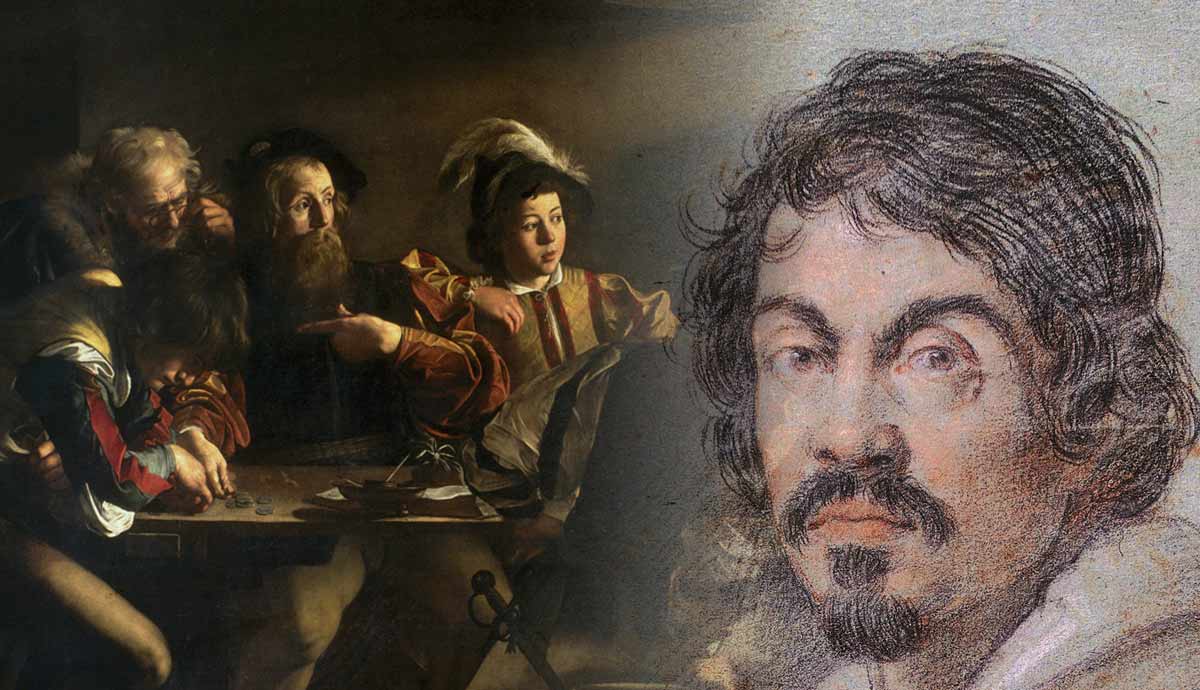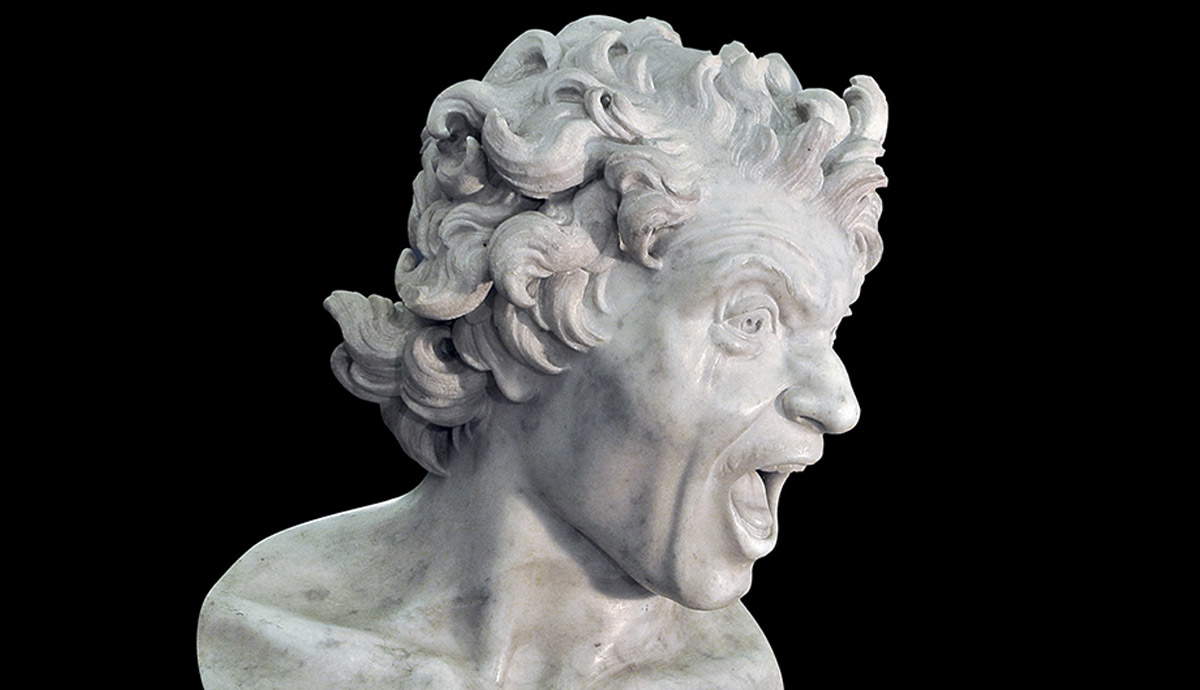
Gian Lorenzo Bernini is known for his dramatic works of art, which move and stir viewers’ emotions. But can they be defined, and should they be? In this article, you’ll learn how the concept of the sublime is the easiest way to define one of Bernini’s most famous works.
Longinus on the Sublime

The Sublime is no one single thing. It is emotive, alluring, aggravating, and frustrating. The concept of the Sublime has been around for thousands of years, though usually used to refer to rhetoric, not art. As pointed out by one expert, the sublime is “…a phenomenon that accompanies different ways of experiencing and construing the world at the very limits of thought and representation.” So, the sublime is subjective, much like the concept of beauty, wonder, and awe. The best thing about the sublime is its individualistic quality. Yet, simultaneously, it brings together ideas into a singular moment of divine encounter, whatever the divine represents to an individual.
The concept of the sublime has its origins in Greek philosophy and literature. It is commonly attributed to the author Longinus, although the actual author remains unknown. The sublime refers to the awe-inspiring and transcendent experience often evoked by nature, art, or profound ideas.
When Longinus set out his treatise on the sublime, he was writing about rhetoric, or the written word, not art. However, there are crossovers between them. Longinus set out five sources of the sublime:
1.) Felicitous boldness in thought
2.) Intense and enthusiastic passion
3.) Skillful molding of figures — sentiment and language
4.) Noble and graceful manner of expression
5.) Embrace of dignity and grandeur.
These five sources, or examples of the sublime, help audiences understand how to define the sublime properly. However, the Sublime could be perceived as adapting to each individual; what one person describes as Sublime might not be for another.
Gian Lorenzo Bernini

Gian Lorenzo Bernini, a prominent Italian artist, was born on December 7th, 1598, in Naples, Italy. He was the son of Pietro Bernini, a respected Mannerist sculptor who recognized his son’s talent at an early age. Known as a child prodigy, Bernini began receiving recognition for his artistic abilities when he was just eight years old. His exceptional skill and creativity in sculpting, architecture, and city planning have left an indelible mark on the art world.
Bernini is celebrated for his extraordinary sculptural works, which include masterpieces such as David, Apollo and Daphne, and The Rape of Proserpina. His sculptures are renowned for their emotional intensity, intricate detail, and lifelike quality, capturing the essence of human emotion and movement in stone. Beyond his sculptural prowess, Bernini was also a gifted architect and city planner, contributing to the design and construction of numerous secular and sacred buildings in Rome and beyond. His innovative approach to art extended beyond traditional boundaries, as he seamlessly integrated sculpture, painting, and architecture to create conceptual and visual masterpieces.
Bernini’s ability to evoke raw emotion and drama in his works set him apart as a true visionary of his time. He was regarded as the successor to Michelangelo and is often referred to as the Caravaggio of sculpture. Bernini’s impact on the art world has been profound. He has inspired and captured audiences for centuries with his unparalleled ability to capture the human experience in his art.
The Ecstasy of St. Teresa and the Sublime

St. Teresa, also known as Teresa of Ávila, was a Spanish nun and mystic who lived in the 16th century. She was a prominent figure in the Catholic Counter-Reformation and a key reformer of the Carmelite Order. St. Teresa was known for her deep religious devotion and intense spiritual experiences. She often entered into states of ecstasy, during which she would become completely absorbed in prayer and experience mystical visions. These experiences were so profound that she would sometimes lose consciousness of her surroundings and supposedly even levitate off her bed.
St. Teresa’s writings, including her autobiography The Life of St. Teresa of Jesus, provide detailed accounts of her spiritual journey and the profound encounters she had with the divine. Her legacy as a mystic and spiritual leader continues to inspire people around the world. In one particular episode, on which Bernini based his sculptural piece The Ecstasy of St. Teresa, she stated that
“I saw in his hand a long spear of gold, and at the point, there seemed to be a little fire. He appeared to me to be thrusting it at times into my heart and to pierce my very entrails; when he drew it out, he seemed to draw them out also and to leave me all on fire with a great love of God. The pain was so great that it made me moan, and yet so surpassing was the sweetness of this excessive pain that I could not wish to be rid of it …”
The above is an excerpt from Teresa’s autobiography. Teresa passionately defended her often ecstatic, mystical experiences against those who doubted their validity.
Bernini’s Cornaro Chapel: A Masterpiece of Baroque Art

Bernini’s awe-inspiring Cornaro Chapel, completed in 1652, is a masterpiece of Baroque art and architecture. The chapel, commissioned by Cardinal Federico Cornaro, is located within the Santa Maria della Vittoria church in Rome, Italy. The focal point of the chapel is the sculptural group depicting St. Teresa of Ávila in a state of spiritual ecstasy. She is portrayed as if levitating on a cloud with an angel. The dramatic use of light and shadow, along with the intricate details of the sculpture, create a sense of divine transcendence and emotional intensity. This stunning work of art is widely regarded as a tribute to the profound and fleeting moment of experiencing the sublime and the divine.
The Cornaro Chapel embraces the sculptural group of St. Teresa as if it is a hidden secret, only told to a select few deemed worthy. It is truly a theatrical work of art that combines different elements to create what art historians call Gesamtkunstwerk. The term roughly translates as a total work of art combining various art forms to create a single cohesive whole. To realize this, one must look past the sculptural group to notice the hidden light source that illuminates the angel and St. Teresa. This trickery is an example of Bernini’s genius, ensuring that, at any time, the audience can experience the full beauty of his work. The hidden light source comes from a widow high above the statue, hidden from the general audience, to create the effect of divinity and drama.
The Sublime in Light, Sculpture, and Symbolism

The light is transported through this window and cascades down through the golden metal rays set behind St. Teresa and the smiling seraph. Directly above the window within the architectural niche is a brilliant painting that represents the Holy Ghost in blinding bright yellow and white hues, which only adds to the overall glory of heaven.
In this aspect, the various additions to the effect of light recall Longinus’s Sublime, in which the author states that bringing together several figures that render to each other their contributions of strength, persuasiveness, and ornament produces sublimity. On the chapel floor, Bernini brings the painting relief to the forefront by displaying skeletons and other death-related imagery that seem to come to life to witness the divine presence.
Essentially, the statues, death, and the divine come together to witness St. Teresa’s experience: the sublime moment of Christ’s love penetrating her through the arrow of this cherub. In this chapel, all elements come together in what Longinus calls a harmonic atmosphere, which creates the most significant effect on the spectator by reaching into the depths of their soul.
The Cornaro Chapel as a Testament to Sublime Artistry

Finally, St. Teresa and her seraph companion together represent elements of Longinus sublime in a third respect—the skillful molding of figures that resonate with sentiment and language. While remembering that Longinus was writing in terms of the rhetorical sublime, these figures also represent rhetorical spectacle. As Longinus stated, “If they [elements] are taken apart, each single member will have no beauty of grandeur, but when knit together, produce a perfectly harmonious whole.” Therefore, the Cornaro Chapel represents a wholeness or totality in which sublimity can only be achieved through harmonizing all aspects.
The Cornaro Chapel stands as a masterpiece that embodies the concept of Gesamtkunstwerk, harmonizing various artistic elements to create a sublime and transformative experience for its viewers. Bernini’s ingenious use of hidden light sources, architectural design, sculpture, and painting creates a harmonious whole that evokes a sense of divinity and drama. The chapel not only showcases the skillful molding of figures but also represents a totality where sublimity can only be achieved through the seamless integration of all its components. As such, the Cornaro Chapel remains a testament to the power of art to deeply resonate with the soul and elevate the human experience to the sublime.










